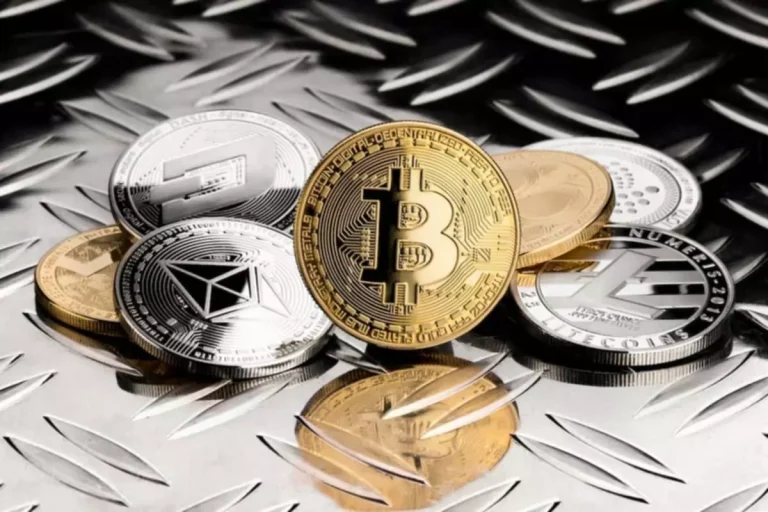Content
The borrower acquires the loan in dollars, and while the repayment amount is determined in dollars, the actual payment is made in euros based on the prevailing exchange rate during repayment. Concurrently, the lender, aiming to disburse and receive repayments in dollars, enters into an NDF agreement with a counterparty, such as one in the Chicago market. This agreement aligns with the cash flows from the foreign currency repayments. As a result, ndf meaning the borrower effectively possesses a synthetic euro loan, the lender holds a synthetic dollar loan, and the counterparty maintains an NDF contract with the lender.
The Non-Deliverable Forward Market
Meanwhile, the company is prevented from being negatively affected by an unfavourable change to the exchange rate because they can rely on the minimum rate set in the option trade. Usually, the forward trade provider will act as a third party in the exchange, handling the transfer of money between the business and the counterparty which is making the payment to them. Also known as an outright forward contract, a normal forward trade is used to lock the exchange rate for a future date. UK-based company Acme Ltd is expanding into South https://www.xcritical.com/ America and needs to make a purchase of 2,000,000 Brazilian Real in 6 months. Acme Ltd would like to have protection against adverse movement and secure an exchange rate, however, BRL is a non-convertible currency.
Offshore Currency Markets: Non-Deliverable Forwards (NDFs) in Asia
If we go back to the example of a business that will receive payment for a sale it has made Digital asset in a foreign currency at a later date, we can see how a forward trade is used to eliminate currency risk. Any investment products are intended for experienced investors and you should be aware that the value of your investment may go down as well as up. HSBC Innovation Bank Limited does not provide Investment, Legal, Financial, Tax or any other kind of advice.
Brazil: Carnivals, Coffee And Now BRL Algos
Tamta is a content writer based in Georgia with five years of experience covering global financial and crypto markets for news outlets, blockchain companies, and crypto businesses. With a background in higher education and a personal interest in crypto investing, she specializes in breaking down complex concepts into easy-to-understand information for new crypto investors. Tamta’s writing is both professional and relatable, ensuring her readers gain valuable insight and knowledge. If in one month the rate is 6.3, the yuan has increased in value relative to the U.S. dollar. If the rate increased to 6.5, the yuan has decreased in value (U.S. dollar increase), so the party who bought U.S. dollars is owed money.
NDFs VS NDSs: Understanding Functional Differences

Achieve unmatched margin, capital and operational efficiencies, and enhanced risk management, across your deliverable and non-deliverable OTC FX. J.B. Maverick is an active trader, commodity futures broker, and stock market analyst 17+ years of experience, in addition to 10+ years of experience as a finance writer and book editor. In an industry where differentiation can be challenging, offering NDF trading can set a brokerage apart. It showcases the firm’s commitment to providing comprehensive financial solutions and its capability to navigate complex trading environments. As the NDF market has become electronically mature in recent years, BRL algos have become the latest innovation on the market. All testimonials, reviews, opinions or case studies presented on our website may not be indicative of all customers.

In 1 month (maturity date or settlement date), I pay you USD 1 milion and receive from you EUR 1.2 million. Depth and quality of the liquidity pools is an essential component of execution algorithms. The algo must be able to source good quality liquidity in order to provide optimal execution. BNP Paribas’ NDF algos take advantage of fragmented external liquidity sources, but also tap into the bank’s local market franchise and internalise the flow by utilising pools of internal liquidity sources. However, as electronic trading in NDF markets grows, they have become increasingly more complex and fragmented. Much like spot FX, trading activity takes place across multiple venues.
As said, an NDF is a forward contract wherein two parties agree on a currency rate for a set future date, culminating in a cash settlement. The settlement amount differs between the agreed-upon forward rate and the prevailing spot rate on the contract’s maturity date. Interest rates are the most common primary determinant of the pricing for NDFs.
- In our example, the fixing date will be the date on which the company receives payment.
- In a currency swap, the principal amounts are exchanged at the start of the contract and re-exchanged at maturity, while the interest payments are made periodically throughout the life of the swap.
- Consider a scenario where a borrower seeks a loan in dollars but wishes to repay in euros.
- This fictitious sum is the agreed-upon NDF face value between the parties.
- Since NDFs are traded over the counter, they do not go through a centralized clearinghouse that guarantees the transaction.
- Also known as an outright forward contract, a normal forward trade is used to lock the exchange rate for a future date.
When making a settlement between the two currencies involved, value is based on the spot rate and the exchange rate listed in the swap contract. In order to bring the NDS to a settlement, one of the parties involved needs to pay the other the difference in the rates between the time of the contract’s origination and its settlement. The settlement amount is determined by comparing the agreed-upon forward rate with the prevailing spot rate on the settlement date. The difference is then multiplied by the notional amount of the contract, and the result is paid in a freely convertible currency, usually the U.S. dollar. Non-Deliverable Forwards (NDFs) are financial contracts used to speculate on or hedge against the fluctuation of foreign currencies.
The two currencies that are involved in the swap can’t be delivered; hence it is a non-deliverable swap. The NDF market is substantial, with dominant trading in emerging market currencies like the Chinese yuan, Indian rupee, and Brazilian real, primarily centred in financial hubs like London, New York, and Singapore. Another risk is counterparty risk which is the risk that the other party in the NDF contract will not fulfill their financial obligations. Since NDFs are traded over the counter, they do not go through a centralized clearinghouse that guarantees the transaction. This makes participants vulnerable to the possibility that their counterparty may default.
Nevertheless, either counterparty can cancel an existing contract by entering into another offsetting deal at the prevailing market rate. The global financial industry is replete with corporations, investors, and traders seeking to hedge exposure to illiquid or restricted currencies. By offering NDF trading, brokers can attract this substantial and often underserved client base.
The primary difference between non-deliverable forwards and currency swaps lies in the structure and purpose of the contracts. An NDF is a single agreement where one party agrees to exchange a predetermined amount of one currency for another at a specific future date, based on a forward rate. A currency swap is a more complex financial instrument that involves the exchange of both the principal amount and interest payments in two different currencies. A non-deliverable forward (NDF) is a straight futures or forward contract, where, much like a non-deliverable swap (NDS), the parties involved establish a settlement between the leading spot rate and the contracted NDF rate. NDFs are straightforward hedging tools, while NDSs combine immediate liquidity provision with future risk hedging, making each instrument uniquely suited to specific financial scenarios.
The settlement of an NDF is closer to that of a forward rate agreement (FRA) than to a traditional forward contract. A non-deliverable forward (NDF) is a two-party currency derivatives contract to exchange cash flows between the NDF and prevailing spot rates. One party will pay the other the difference resulting from this exchange.

The borrower could, in theory, enter into NDF contracts directly and borrow in dollars separately and achieve the same result. NDF counterparties, however, may prefer to work with a limited range of entities (such as those with a minimum credit rating). Because NDFs are traded privately, they are part of the over-the-counter (OTC) market. It allows for more flexibility with terms, and because all terms must be agreed upon by both parties, the end result of an NDF is generally favorable to all. The swap is settled when the company from the U.S. pays the South Korean company $22,500 dollars ($112,500 – $90,000) to make up the difference. Foreign exchange options can carry a high degree of risk and are not suitable for everyone as they can have a negative impact on your capital.